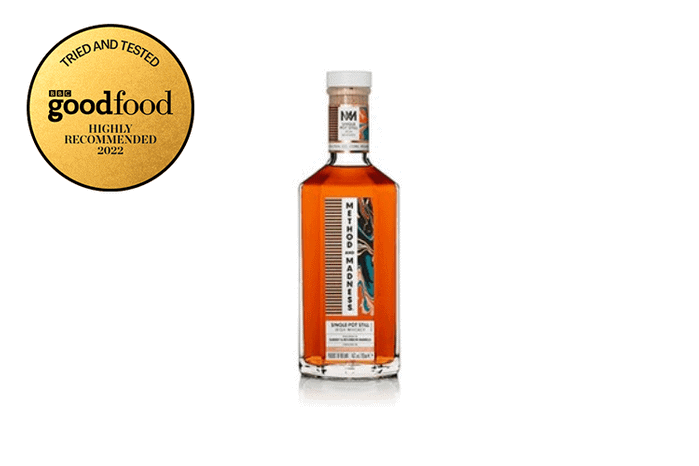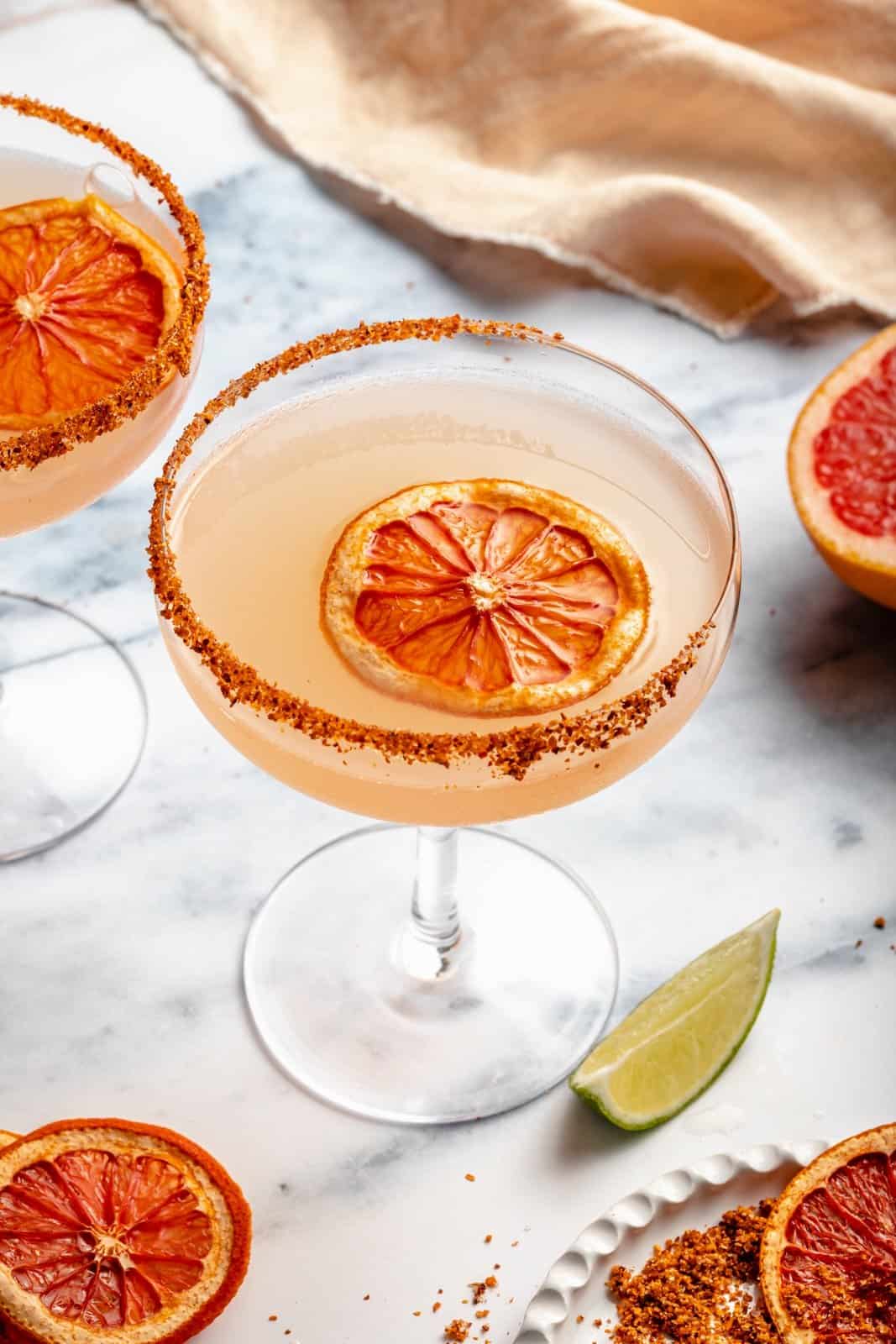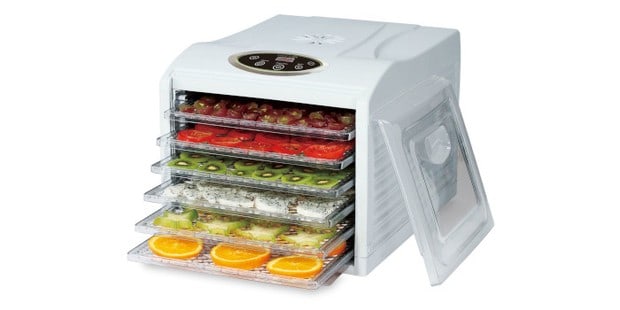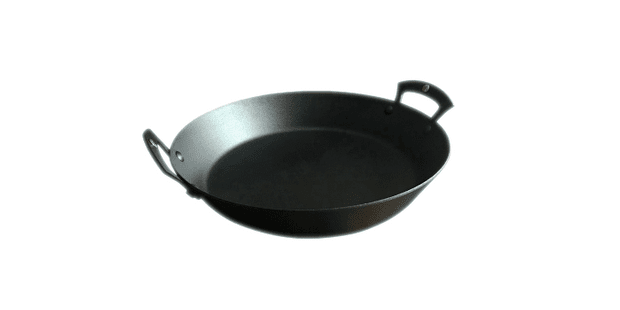The classic flavours and qualities associated with Irish whiskey are of a light, smooth spirit that still retains complexity and depth. You will often find fruit, especially apple, banana and pear. Vanilla, cinnamon, black pepper and nutmeg all pop up amongst the spicy edges. The sweetness can vary from very light to rich and dark. Quite often the whiskey will have a mouth-coating oiliness far greater than the spirit’s heft might suggest. The one thing you will very rarely find in Irish whiskey is smoke or peat. Connemara is a notable exception, and other distilleries have put out peated whiskies, but it is not a common feature.
Our drinks expert Richard Davies is a writer, barman and brewer with roots in home-brewing. With Miriam Nice, he co-wrote The Art of Drinking Sober. When he’s not making his own beer and cocktails, he works at award-winning micro pub The Beer Shop (http://www.thebeershoplondon.co.uk/).
The perfect bottle of Irish whiskey is excellent sipped neat, but we’ve got plenty of whiskey recipes to help you use it up too. Try a classic old fashioned or Irish coffee, stir up decadent homemade Irish cream with plenty of dulce de leche or shake a quirky Brown Derby with grapefruit juice and honey.
For more, visit our reviews section to find more than 200 practical buyer’s guides, including taste tests of gin, vodka, rum and brandy, plus round-ups of the best whiskies from around the world including best English whiskies, best Japanese whiskies or best American bourbon. We’ve also tested the best whisky subscriptions and found the best whiskies to buy as gifts.
Jump to section:
Best Irish whiskey at a glance
- Best blended Irish whiskey for mixed drinks: Lambay Small Batch Blend, £32.68
- Best peated Irish whiskey: Two Stacks Smoke & Mirrors whiskey, £44.95
- Best vintage single pot under £50: Powers John’s Lane, £48.95
- Best experimental Irish whiskey: Waterford The Cuvée, £69.95
- Best Irish whiskey using alternatives to oak: Midleton Method and Madness single pot still Irish whiskey, £69.95
- Best Irish whiskey for Bourbon devotees: Glendalough Double Barrel Irish whiskey, £33.45
- Best Irish whiskey for Scotch single malt fans: That Boutique-y Whisky Company Irish single malt #1, £58.95
- Best Irish single malt under £50: Bushmills 10-year-old single malt whiskey, £37.25
- Best vintage single pot still Irish whiskey under £100: Redbreast 15-year-old single still whiskey, £81.45
- Best Irish whiskey for lovers of big sherried finishes: Egan’s Fortitude single malt, £41.75
- Best Irish whiskey for rum lovers: Teelings Small Batch whiskey, £33.75
- Best Irish whiskey under £50: Green Spot single pot still whiskey, £42.95
Best Irish whiskey to buy
Lambay Small Batch Blend, £32.68
Star rating: 3.5/5
IMAGE
Best blended Irish whiskey for mixed drinks
Size: 70cl
ABV: 40%
Lambay launched as an Irish whiskey brand in 2017. Like many newer outfits in Irish whiskey, Lambay do not currently distil their own spirit, instead sourcing it from other Irish distilleries.
The Small Batch Blend caught our attention. The Small Batch Blend is intriguing, as although it hits many of the archetypal Irish whiskey touchpoints with a light, smooth and sweet framework, the balance of flavours veer a little out of what I would expect. The impact of the cognac finish and the sea air (Lambay is the largest island off Ireland) is restrained, but still give this Lambay something a little unusual. On the nose, it comes across light and delicate and on the palate, it is again light: the sweetness of very pale malt and a hint of marshmallow, baked fruit, the spiciness of vanilla and pepper. The finish runs with the sweetness, and as it fades out some of that spiciness remains, bracketed with a hint of salt and the nuttiness going over to a light woody dryness. Read our full review of the Lambay Small Batch Blend Whiskey.
Two Stacks Smoke & Mirrors whiskey, £44.95
Star rating: 4.5/5
image
Best peated Irish Whiskey
Size: 70cl
ABV: 40%
As a new operation, Two Stacks act as blenders, with a keen eye to what finishing in an unexpected cask can do to an already aged whiskey.
The Smoke & Mirrors whiskey shines a light on peat, which is under-represented in Irish whiskey. The whiskey is a lighter gold than a turn in a stout barrel might suggest. On the nose, there’s a good hit of peat and roast coffee, then a softer chocolate note. To drink, the smoke and roasty side are more delicate than expected, the creaminess allies with the chocolate, as the fruit tends toward baked and luscious while vanilla, clove and cinnamon spicing add interest. The finish is more smooth chocolate, coffee roastiness and dark dried fruit as the smoke lingers on awhile.
Highly enjoyable, this is a delightful Irish whiskey with enough depth to marry happily to a goodly peat side and have neither side lose out. Read our full review of Two Stacks Smoke & Mirrors Whiskey.
Available from:
Spirits Kiosk (£44.95)
Master of Malt (£44.95)
Powers John’s Lane, £48.95
Star rating: 4.5/5
image
Best vintage single pot still under £50
Size: 70cl
ABV: 40%
Powers is one of the great historic names in Irish whiskey, established in Dublin in 1791 and as synonymous in its day with the spirit as Jamesons is now. The John’s Lane is a twelve year old single pot still whiskey. Just by its very name – the address of their old Dublin distillery – the John’s Lane evokes heritage.
It pours a pleasing rich, coppery gold in the glass. On the nose, it’s all classic pot still signifiers – smooth honeyed malt, rich apple and banana, vanilla, some cinnamon and then a little tobacco and fruit cake. On the palate, it builds from the nose, with more dried fruit, intense honeyed sweetness, hints of coffee and a full, oily mouthfeel. The finish continues awhile, the spice and sweetness letting in more coffee, and then a little wood tannin at the end.
This is an excellent example of what a classic single pot still whiskey can do. For a perfect serve, take it as is and give time to experience the flavours. Read full review of Powers John’s Lane whiskey.
Waterford The Cuvée, £69.95
Star rating: 4.5/5
image
Best experimental Irish whisky
Size: 70cl
ABV: 50%
Waterford Distillery launched in 2015 with a focus on proving the impact of terroir on creating exceptional whiskies. Founder Mark Reynier recruited nearly a hundred barley farmers across South-East Ireland to build up a patchwork of varying terroir, barley varieties and cultivation methods. The Cuvées are built from the breadth of whiskies now available to Waterford, in the manner of winemakers. As it stands it is both a very fine, complex whisky and also a window into the shape of releases to come. There is definitely still a slightly young spirit character to The Cuvée, but even so there is much to enjoy. On the nose you get lots of spice – ginger, vanilla and pepper, a light barley character, floral notes and a touch of lemon. The palate brings in fresh mint, lots of pepper and then some chocolate notes, biscuity sweetness and ginger on an oily mouthfeel. There’s an intensity to the finish, with pepper and then some oak drying out the floral honeyed sweetness leaving the original cereal note. Read our full review of Waterford the Cuvée.
Midleton Method and Madness single pot still Irish whiskey, £69.95
Star rating: 4.5/5

Best Irish whiskey using alternatives to oak
Size: 70cl
ABV: 46%
Method And Madness is a small, experimental offering from within the Midleton distillery. The single pot still comes in a striking bottle with contemporary labelling, but the beauty is in the taste. The nose is rich and sweet, with spices led by ginger and cinnamon. On the palate, it continues sweet, the caramel edging into toffee, with the malt toasty. It finishes long and rich, still sweet, but more of the chocolate and cocoa amongst a nutty, woody spicing. The unconventional flavour notes, including hints of chestnut, set this whiskey apart. Read our full Midleton Method and Madness review.
Glendalough Double Barrel Irish whiskey, £33.45
Star rating: 4/5

Best Irish whiskey for Bourbon devotees
Size: 70cl
ABV: 42%
While this hits a lot of the notes you’d expect from an Irish whiskey, there’s a real kinship with American whiskies to the Double Barrel, and as such it strikes us a perfect introduction to Irish whiskey for a fan of bourbon. The nose has vanilla, and creamy smoothness, almost chocolatey at the end. That creamy element continues into the palate, with more vanilla, dried fruit and a little coffee note all contributing to the full body and a touch of brown sugar sweetness as well. Read our full Glendalough Double Barrel review.
That Boutique-y Whisky Company Irish single malt #1, £58.95
Star rating: 4.5/5

Best Irish whiskey for Scotch single malt fans
Size: 50cl
ABV: 47/6%
Packaging by That Boutique-y Whisky Company is always eye-catching, but this nod to Father Ted takes it to another level. Novelty packaging aside, this is a company dedicated to sourcing great whiskies that you might not be able to find elsewhere, such as ones from overlooked or now-closed distilleries. This particular batch comes from an unnamed distillery. Expect a full body and smoothness. It’s fruity on the nose, which carries through to the palate, with hints of melon. Read our full That Boutique-y Whisky Company Irish single malt review.
Available from:
Master of Malt (£58.95)
Amazon (£58.95)
Bushmills 10-year-old single malt whiskey, £37.25
Star rating: 4/5

Best Irish Single Malt under £50
Size: 70cl
ABV: 40%
A solid whiskey from a heritage brand, this is keenly priced for a spirit of this vintage. While it’s a light whiskey, there’s plenty going on in the flavour and aroma stakes. Expect a light-bodied sweetness and fudgey undertones, plus juicy fruits and a hint of sherry. Its lightness means it lends itself well to being used in whisky cocktails. Read our full Bushmills 10-year-old single malt whiskey review.
Redbreast 15-year-old single still whiskey, £81.45
Star rating: 5/5
Best vintage single pot still Irish whiskey under £100
Size: 70cl
ABV: 46%
Redbreast is a respected brand in Irish whiskey and is now the biggest-selling single pot still whiskey in the world. Their 15-year-old is a pure pot still whiskey which, on the eye, is a rich deep copper. On the nose, it has a full, almost viscous air, with honeyed malt, intense spices, dried fruit and gentle woody notes that fade into creamy vanilla. On the palate, the interplay of honey, spice, fruit and wood notes carry on. A touch of water in the glass opens it up. Read our full Redbreast 15-year-old whiskey review.
Egan’s Fortitude single malt, £41.75
Star rating: 4/5

Best Irish whiskey for lovers of big sherried finishes
Size: 70cl
ABV: 46%
A single malt whiskey with no age statement, Fortitude has been aged exclusively in Pedro Ximenéz barrels – a bold statement. It would be hard to pretend this was anything other than a bit of a beast, and as such it won’t be to everyone’s taste. That said, if you want a big, brooding whiskey that can really make itself felt, this is a pleasing change. For a perfect serve, this just needs a single ice cube to give you a few different aspects to consider as you sip it slowly.
The whiskey has a full gold colour to it and a swirl of the glass present legs that almost refuse to form, a hint of how full this whiskey is. The nose is immense. On the palate, it continues as a big, hefty beast. There’s a lot going on, with wood, fruity tannins, more leather and savoury notes over a smooth, incredibly oily consistency with a redolence of dark chocolate. Again, the more traditional Irish characteristics take a while to emerge, but are still there. It finishes long, with the honey sweetness asserting itself. Adding some water dials the intensity down and allows the apple, light honey and spice of the whiskey more time to shine, should that be your preference.Read our full Egan’s Fortitude whiskey review.
Available from:
The Whiskey Exchange (£41.75)
Master of Malt (£41.75)
Amazon (£41.92)
Teelings Small Batch whiskey, £33.75
Star rating: 4/5

Best Irish whiskey for rum lovers
Size: 70cl
ABV: 46%
Like rum? This complex whiskey has flavour notes that will feel familiar thanks to the spirit spending six months aging in Central American rum casks. The aroma features vanilla, soft fudge, toffee and brown sugar, the finish has a woody note that keeps all that sweetness in check. This one is a great contender for serving in a classic Irish coffee. Read our full Teelings Small Batch review.
Green Spot single pot still whiskey, £42.95
Star rating: 5/5

Best Irish Whiskey under £50
Size: 70cl
ABV: 40%
Green Spot is a classic single pot still whiskey, lacking an age statement but believed to be comprised of seven-to-10-year-old whiskies. The colour is a pale gold, and the nose is light but rich. There’s sweet barley and a vanilla creaminess to the aroma, with a pleasing viscosity on the palate. This is a delightful introduction to single pot still whiskey, coming at the lower end of the price scale to its peers, without sacrificing either complexity or drinking pleasure. Read our full Green Spot single pot still whiskey review.
How we tested Irish whiskey
All our best Irish whiskies were carefully taste tested to assess the aroma, taste, mouthfeel and finish. Whilst Irish whiskey has a stereotypical reputation for being “smooth”, there is a huge amount more to them than this and we wanted to highlight the complexity and nuance of some bottles, as well as those whiskies pushing against being pigeonholed by such terms. In addition, we look at whiskies across a broad range and considered how they would best be drunk – what is ideal for a vivacious highball may not be ideal for a contemplative sipper.
Whiskey vs whisky: what’s the difference?
There are two parts to the differences between Irish and Scotch whiskies. The first part is the differing spellings of “whiskey” and “whisky” – caused by different translations in Scotalnd and Ireland from the root word in Gaelic. The ‘e’ in whiskey is also a relic of the 19th century, when Irish whiskey was a far larger and more reputable product than Scotch whisky, so the ‘e’ was a way to signal to drinkers all which country’s spirit you were getting.
The second difference is in the regulations and traditions that define what may call itself an Irish whiskey or a Scotch whisky. Obviously, Irish whiskey must be made and aged in Ireland (both the Republic and Northern Ireland), with a minimum of three years spent in wooden casks. It is common – but not required – that Irish whiskey be distilled three times, which lightens and smooths the spirit. The slight contrast here is that the Scotch regulations specify oak as the wood for their casks, and double distillation is the norm. Peated barley (barley malted over peat, imparting a smoky flavour) is also more a familiar aspect of the flavour profile in Scotch, especially those from Islay. Lastly, while a single malt whisky is the archetypal form for Scotch, the Irish focus on Single Pot Still, which makes a virtue of the mixture of malted and unmalted barley that goes into it.

A history of Irish whiskey
Irish whiskey, despite having been a more popular and prestigious spirit in its golden age than Scotch whisky, did not have the best time of the mid-20th century.
Now though, there are a profusion of both invigorated old brands and exciting new entrants to the market, all seeking to rectify our ignorance of what its adherents claim is the original whisk(e)y.
Firstly, the Irish claim to have been making whiskey before everyone else. This is based on a note dating to 1405 in the Annals of Clonmacnoise, about the head of a clan who died after ‘taking a surfeit of aqua vitae’ at Christmas. The earliest Scottish record of distilled spirits apparently dates to a tardy 1494.
Hibernian-Caledonian bragging rights aside, this is of less interest than the fact that Irish whiskey was, by the late nineteenth century, absolutely massive. Like with beer, whiskey scaled well to the possibilities of the industrial revolution and it was the Irish who ruled the roost.
In 1823 a 31,618-gallon pot still was commissioned for the Midleton Distillery in County Cork, and was so large that it required the room to be built around it. The largest pot still currently in operation today that we could find reference to is a ‘mere’ 16,498 gallons.
As the Victorian era waxed, the five main distilleries in Dublin alone could produce up to 10 million gallons of spirit a year between them.
The Irish whiskey boom was not just a question of scale, but also of prestige. There’s a fuller explanation in our guide to whiskey and whisky, but the fact is that the Irish didn’t want their product confused with the more parochial product from across the North Sea, adding an ‘e’ to differentiate themselves and keep the association with quality for the Irish product.
Things got rather dicier in the 20th Century, however. There was the steady encroachment of lighter-bodied spirits made from column stills, which were both to the public’s taste and also more efficient to run.
The post-Independence situation in the 1920s restricted access to the United Kingdom and Commonwealth, which had been a huge market for Irish whiskey.
Prohibition in the United States wiped out another massive export destination for a decade, and then the Great Depression hampered things everywhere.
Distilleries consolidated and merged, and by the late 1960s, you only had Irish Distillers (Jameson, Powers and Cork Distillers) based in the Republic, and Bushmills in Northern Ireland. In 1972, Bushmills joined Irish Distillers.
Things perked up slowly – in the late 1980s the new, independent Cooley’s distillery opened and drinks giant Pernod Ricard picked up Irish Distillers, prompting more interest and advocacy for this august spirit and some of its surviving brands.
This process has accelerated in the last two decades, with 25 operating distilleries now in Ireland (2019 figure), and more planned, as the appetite for Irish whiskey worldwide is claimed to be growing by over 15 per cent a year.
What is Irish whiskey made from?
Irish whiskey is made from a variety of ingredients, depending on the type, but is most closely associated with the Pot Still-type, which comprises a mixture of malted and unmalted barley. As with Scotch whisky, malted barley is key, but it is the unmalted barley that sets Pot Still whiskey apart from a Single Malt. Single Pot Still whiskey is always a blend of malted and unmalted barley, with a minimum of 30% of both in the grist, and no more than 5% of any other grain included.
How to drink Irish whiskey?
As with all drinks, how you drink an Irish whiskey is a matter of personal preference and may change from brand to brand. Enjoy sipping your whiskey neat, or try adding a few drops of water, which can lighten the spirit and allow new subtleties to emerge. While ice might not be ‘necessary’ for very good whiskies, it is again a matter of preference whatever the bottle. When pouring over ice, use large cubes to melt more slowly in your drink.
Irish whiskey makes for an interesting alternative to bourbon, rye and brandy in a lot of classic cocktails, so don’t be afraid to experiment!
Irish whiskey cocktail recipes
When mixing, Irish whiskey is often easier to use in cocktails and long drinks than Scotch, so why not try mixing up a classic Irish coffee, a Brown Derby (https://www.bbcgoodfood.com/recipes/brown-derby), or an Irish Whiskey Old Fashioned. For something decadent, try making your own homemade Irish cream – a great Christmas gift.
More on whiskey
Whisky or whiskey – what’s the difference?
Our best ever whiskey cocktails
Top 10 ways to cook with whiskey
Related reviews
The best Irish whiskey
The best Scotch
The best whisky from around the world
The best bourbon
The best craft whiskies
All our gin taste tests
The best mezcal
The best rum
Best whisky subscriptions and clubs
What Irish whiskey do you love? Share your product suggestions with us below…
This review was last updated in March 2022. If you have any questions, suggestions for future reviews or spot anything that has changed in price or availability please get in touch at goodfoodwebsite@immediate.co.uk.





